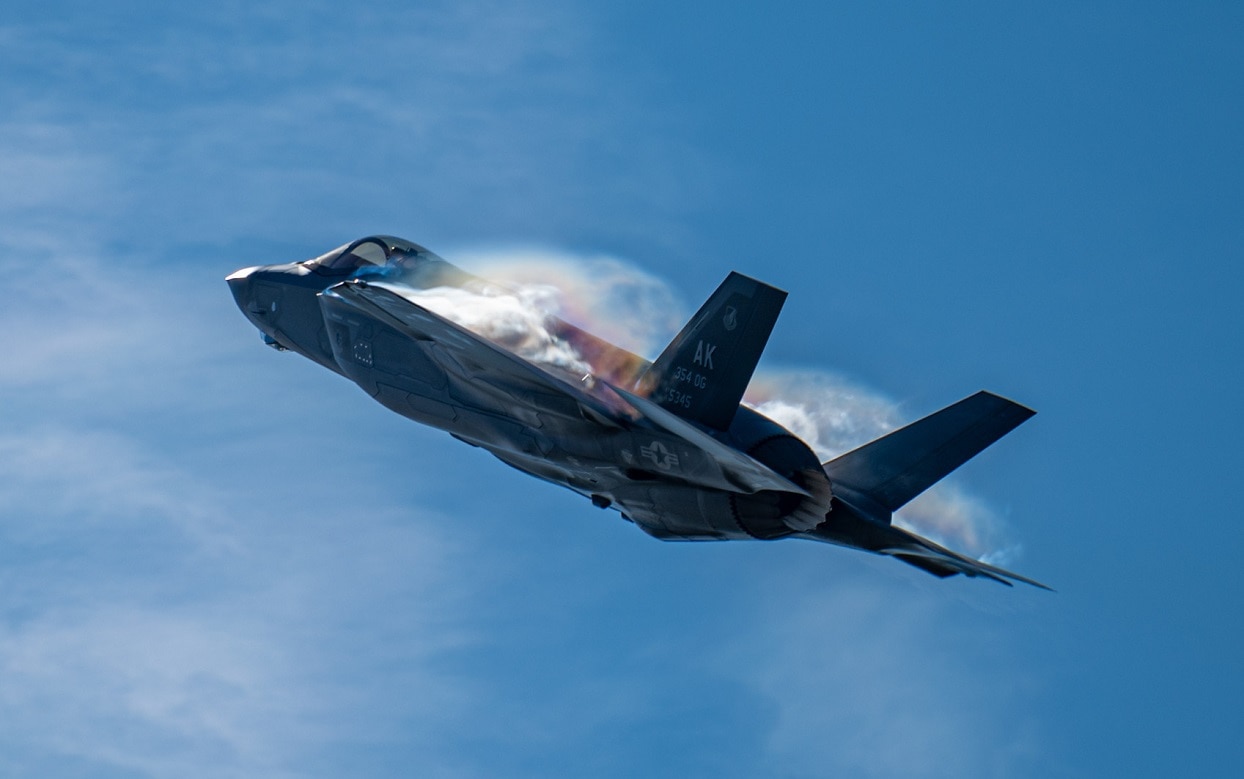Images of targets resembling United States Navy warships, including a Gerald R. Ford-class aircraft carrier and Arleigh Burke-class guided-missile destroyers at a ballistic missile test site in the Taklamakan desert region in Northwest China, were widely circulated online earlier this week. The satellite images captured by Colorado-based satellite imagery company Maxar Technologies reportedly showed the mock-ups of the U.S. warships at a ballistic missile test site.
On Thursday, a second suspected missile target in the shape of a U.S. aircraft carrier was also spotted in a rural Chinese desert, according to satellite photos obtained by USNI News. This second carrier target is about 300 miles away from a larger suspected missile range in the Taklamakan Desert.
However, it may not just be warships that the Chinese are looking to target at its remote missile ranges.
The South China Morning Post also reported that recent satellite imagery showed at least four mock-ups of F-35 Lighting II jets at the People’s Liberation Army (PLA) Rocket Force’s Korla Shooting Range in Xinjiang, citing the latest edition of monthly military magazine Kanwa International Journal. Andrei Chang, the magazine’s editor-in-chief, was quoted as saying that the models were made to scale, and that they might be targets for the rocket force’s DF-16 and DF-21C medium-range ballistic missiles.
In addition to training purposes, the full-size targets were also meant to send a message to the United States Air Force, which has bases in Japan. The DF-16 (Dong Feng-16/CSS-11) – also known as the Orient Express series – is a road-mobile, two-stage, solid-fueled, short-range ballistic missile developed and deployed by China. It was first publicly displayed at a 2015 military parade. It has a reported range of 1,000km (621 miles). It has a diameter of 1.2 m and can carry a 1,000 kg payload between 800-1,000 km, while it can also be equipped with up to three MIRV high explosive, nuclear, or submunition warheads.
Chang was reported to also claim that China had deployed the DF-21C (Dong Feng-21, CSS-5) in its northwest region. The medium-range, road-mobile ballistic missile can deploy a 600 kg payload with a minimum range of 500 km (311 miles) and a maximum range of 2,150 km. The DF-21C can be armed with a single reentry vehicle that can be equipped with a 250 or 500 kT yield nuclear device. If actually deployed where Chang suggested, it could put essentially all of Japan within range.
‘The Korla Shooting Range has been expanded in the past two years as the rocket force has reinforced training aimed at targets in Japan,” Chang told The South China Morning Post. “[The mock-ups and DF-21C deployment] could be seen as the PLA’s response to American marines’ increasing deployment of more F-35Bs to their airbase in Iwakuni, while Japan’s Air Self-Defence Force also sent more F-35As to Misawa Air Base.”
However, none of that answers exactly why the mock-ups of the F-35 would have been deployed at the range, but Chang said that simulation models of the U.S. F-15 Eagle fighter had also been seen at the Korla Shooting Range. The answer could be that China would look to destroy the U.S. air assets on the ground.
The South China Morning Post also quoted Ben Ho, a researcher on the military studies program at Singapore’s S. Rajaratnam School of International Studies.
Ho suggested that the mock-ups of U.S. vessels signaled Beijing’s willingness to challenge American sea power, while the F-35 models hinted that the U.S. Air Force’s land-based airpower could also be targeted by the PLA’s long-range missiles.
“This is clearly part of China’s overall message of deterrence for external powers not to get involved in any regional conflict,” Ho said. “Japanese Prime Minister Fumio Kishida, who is usually seen as a foreign policy dove, has already taken a tougher stance on China during the five-plus weeks he has been in power. Though a Taiwan contingency is likely to involve Tokyo one way or the other given its proximity to the island, the image of the F-35s will probably create some uncertainty in the Japanese calculus.”
Peter Suciu is a Michigan-based writer who has contributed to more than four dozen magazines, newspapers and websites. He regularly writes about military small arms, and is the author of several books on military headgear including A Gallery of Military Headdress, which is available on Amazon.com.

